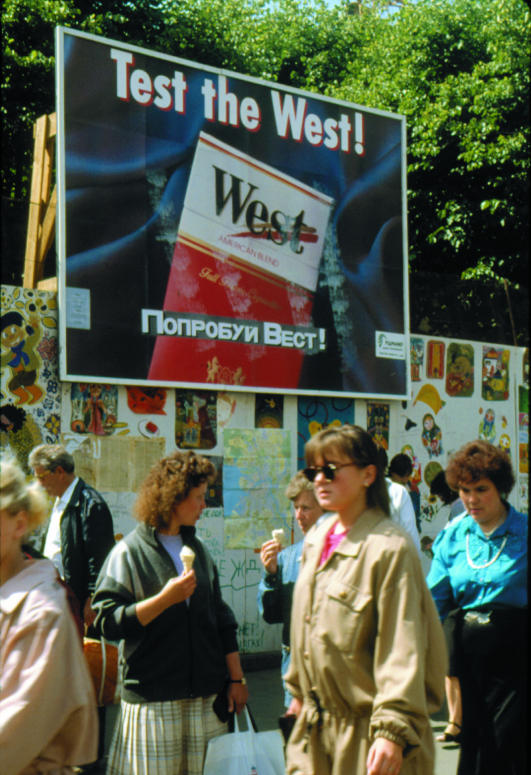Russia has introduced its first law in more than 20 years that limits the use of tobacco. The law, signed by President Putin last July, came into force last month.
It is the first to be enacted since the 1970s, when smoking in trains and by doctors when working with patients was banned.
The new law prohibits almost all forms of tobacco advertising, including on television, radio, and billboards, and outlaws smoking at places of work and in health, cultural, governmental, and educational facilities, except in designated smoking areas. All flights lasting under three hours are to be non-smoking.
Maximum tar and nicotine levels for cigarettes are also laid down for the first time. The maximum tar level in filter cigarettes has been set at 14 mg per cigarette, while the maximum level of nicotine has been set at 1.2 mg. The corresponding limits for non-filter cigarettes are 16 mg of tar and 1.3 mg of nicotine. These are higher than the limit in the European Union, where the level is currently less than 12 mg tar per cigarette and is soon to be reduced to 10 mg.
Action to reduce smoking among children includes making illegal the sale of cigarettes in packs of less then 20, the sale to anyone under 18 years of age, and vending from machines. In recognition of the tobacco industry's policy of placing products in films, the law bans the depiction of smoking on television and in theatres and cinemas, unless the smoking is an essential part of the plot.
Representatives of the tobacco industry in Russia have not yet protested much about the restrictions, making some doctors wonder whether the law is going to be effective. There is considerable scope in the law to designate many public areas as smoking areas, which could reduce its effect, and the authorities do not seem in a hurry to enforce some of the law's other provisions. Although the law has been in force for several weeks, about 20% of advertisements on the streets of Moscow continue to promote cigarettes.
Figure.
SEAN SPRAGUE/PANOS
When will the billboards go?



